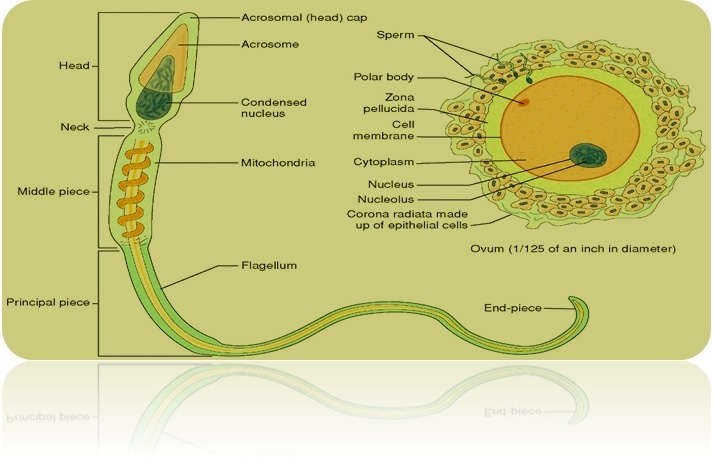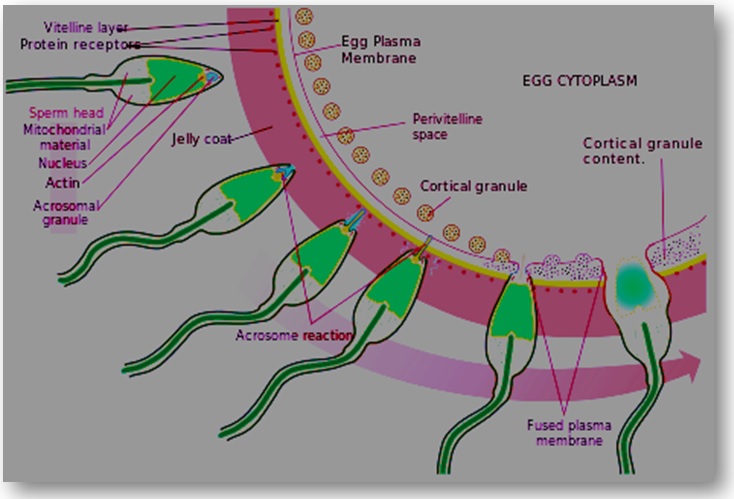Fertilization Assignment
What is fertilization?
Fertilization is the fusion of gametes. In this process, male gamete fuses with the female gamete to form the zygote. Zygote has characteristics of both the parents. Therefore, it accomplishes two main goals: The first is the development of new life on the earth and the secondly, it carries genes from both the parents.
The process of fertilization greatly varies from one organism to the other. In some organisms very basic method of fertilization is applied whereas in the others some modifications in the process can be observed with little of the complexity. But there are certain steps that are common in all organisms which include:
- Recognisation of sperm.
- Contact between egg and sperm.
- Fusion of egg with sperm.
- Start of development process.
These are few points that are common in the entire organism undergoing fertilization. Here two terms have been talked about, sperm and egg. These are the male and female gametes respectively. The shape and function of both varies but in the absence of any one, the process of fertilization is incomplete.
Structure of sperm:
Sperm is a male gamete that takes part in the process of fertilization. There are certain structures present in the sperm that help it to penetrate inside the egg. It is divided into head, neck and tail. There is a haploid nucleus that contains DNA and just above the nucleus is a cap like structure called acrosome. Acrosome contains many enzymes that help in the process of fertilization. Both these component are locked inside the plasma membrane and hence makes up the head of sperm. The neck of sperm consists of centriole, mitochondria and axonemes. Axoneme is formed form the microtubules arranged in a specific pattern. In the core of the axoneme, there are two microtubules and surrounding the core is nine microtubules. These nine microtubules are present in doublet where one is complete and the other is incomplete in structure. Finally is the tail portion which is made of flagellum. The movement of flagellum depends on the energy supplied in the form of ATP and this ATP is supplied to the flagellum by mitochondria. One more factor is involved in the propulsion of sperm; which is dynein. Dynein is present in axonemes and provides energy for the propulsion of sperm. Sperm from testes reaches seminiferous tubule under the guidance of other female reproductive organs like vagina, cervix etc. and then the further process of fertilization takes place.

Fertilization Assignment Help By Online Tutoring and Guided Sessions from AssignmentHelp.Net
Structure of egg:
Egg is the female gamete that takes part in the process of fertilization. It contains all the material that nourishes zygote and help in the development of fetus. The cytoplasm of the egg includes ribosome; messenger mRNA, nucleus, chemicals and many of the other important substances. It is further covered by plasma membrane that helps in the exchange of materials in and out of the cell. The plasma membrane has the covering of vitelline membrane that is made of different kinds of glycoprotein and helps in recognisation and attraction of sperm.
Fertilization:
Several sperm enters the female reproductive tract, but only one fuse with the egg and this fusion must be within 72 hours. It is because sperm can survive in the female reproductive tract only for particular time period. Once, it enter female reproductive tract it undergoes several changes in the fallopian tube of the female system gaining high motility. Once the sperm penetrate the egg, the outer portion gets thickened and the end piece that is tail of the sperm is removed .These changes are completed in different steps that includes extension of nucleus and acrosomal process. The acrosomal process gets elongated and fuses with the plasma membrane that lies at the outer portion. Then the elongated acrosomal process pierces the jelly coat of egg. The acrosomal granules that have many enzymes loaded starts reacting at this point assisting the acrosomal process in fusion with the plasma membrane of the egg. Once the plasma membrane of sperm and egg gets fused, the tail is left behind and all the material within the plasma membrane of sperm enters the cytoplasm of the egg. Thus this forms the zygote and hence fertilization is complete. In the initial level, zygote has the entire nutrient for its growth and development. The process of fertilization in human is interesting that brings up the new life on the earth. Slowly, when zygote develops into fetus, it starts receiving all the necessary nutrients from the mother and hence after a period of time, the baby is born.



